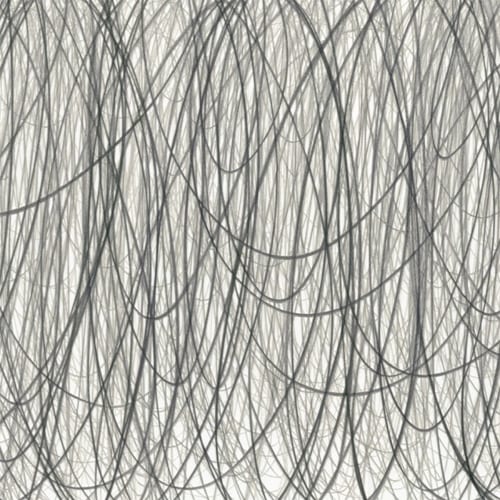
In 2000, Richard Chartier inaugurated his LINE imprint with Series, a record exploring the sense of menace that can be communicated through the most minimal of sounds. Throughout Series, microscopic bursts of high frequencies pierce across an intensely hushed landscape of tones which hang threateningly in the air. The tones often blend into the banal surrounding sounds of the world, and are at times almost totally inaudible. Yet, almost paradoxically, the music feels highly pressurised and foreboding, like the hum of a telegraph pole on an empty lane. This form of extreme minimalism is at its most potent when it achieves this arresting sonic effect, forcing an awareness of space from the listener and dragging them unwillingly into a woozy, zoomed-in sound world.
What started with the eerie sounds extracted from the pages of library books has become the subject of focussed and meditative exploration for Chartier. His releases for LINE have used lowercase, microsound and other minimalist techniques in a number of intriguing ways. Levels(inverted) hones in on the sounds emanating from a fluorescent light fixture. Of Surfaces aims to emulate the minuscule sounds we interpret as distant activity. Two Locations seeks to explore the impact of location on a composition itself. Across these pieces, the drive for sonic innovation is ever-present. Chartier’s compositions indicate an incessant motivation to develop new sounds and new ways of thinking about sound, a trait which is perhaps more interesting than the individual pieces themselves.
It is intriguing, therefore, that after twelve years of the label’s existence, Chartier has felt compelled to return to the label’s origins, reworking material from Series and other sources into the two fully realised pieces that form Recurrence. Whether this was to emphasise the changes that he has made in the last twelve years is unclear. Yet what is immediately apparent is that Recurrence(Series) has been mutated from the original into a much more dark and brooding composition. The piece clocks in at an extreme fifty minutes, during which high frequency bursts are more or less sidelined to focus on the shifting interaction of deeper, more elaborate elements. Each unique sound, be it a distant drone or a fleeting crackle, floats between the speakers, zoning in and out and only rarely falling away to the silence that was such an important feature of Chartier’s early work. Chartier conveys an overcast and bleak emotional landscape in which distant noises play out in their own, uncontrollable ways.
Though Recurrence(Series) may display some of the most complex composition of Chartier’s career, the most arresting piece here is undoubtedly Recurrence(room/crosstones). The piece begins with a subbass rumble which refuses to stay still, sounding at once overpoweringly loud and yet distant, as if from some other room. Hovering airless in the centre of the song is a quiet, disturbing set of tones, ringing incessantly like a phone off the hook. These two simple elements interact in the most bizarre way, creating constantly shifting illusions of space and volume. Though the technique is different, the same sense of quiet malice dwells in Recurrence(room/crosstones) as in Series, the same intense pressure that launched the LINE label into being.
Whether or not there is a sonic significance to Chartier’s reuse of old material, this release reinforces the meditative and intensely reflective processes that have become an integral feature of extreme minimal music. Chartier evidently uses such processes in the belief that it will generate new and exciting frontiers of music. For this reason, everything in Chartier’s world has a distinct purpose, and a sound is never relinquished until that purpose has been fully served.